A bit of history.
For the first time, they wanted to have smooth skin long before our era. Both Cleopatra and Nefertiti sought to become even more attractive to their beloved and dreamed of getting rid of unwanted hair on the body.
Moreover, the absence of hairs on the body was considered a symbol of innocence. In ancient Egypt, not only women, but also men struggled with body hair. All the means at hand were used: sugar paste, pumice, sharp shells. In ancient Rome, this procedure was carried out in special hot-baths: a thread was wound on each hair and it was abruptly pulled out by the roots. And the ancient Greeks generally scorched unnecessary vegetation with an oil lamp!
 And despite the fact that thousands of years have passed since those times, rockets flew into space, scientists invented an artificial heart, the Internet appeared … unwanted hairs were torn out by all available means, and are still being torn out! Of course, these methods have been improved, but their essence remains the same. We will take a look at the most common ways to remove unwanted hair. And most importantly, we will show you how to avoid skin irritation after using these procedures.
And despite the fact that thousands of years have passed since those times, rockets flew into space, scientists invented an artificial heart, the Internet appeared … unwanted hairs were torn out by all available means, and are still being torn out! Of course, these methods have been improved, but their essence remains the same. We will take a look at the most common ways to remove unwanted hair. And most importantly, we will show you how to avoid skin irritation after using these procedures.
Are epilation and depilation the same thing?
Epilation (from the French epiler – remove hair) – artificial hair removal by destroying hair follicles or hair removal from the root. This is a process of acting on the hair roots, allowing the hair to be removed along with the hair follicle, so that the hair does not grow back for a long time. This method includes: waxing, sugaring, hair removal with an epilator, laser hair removal.
Depilation is a hair removal process that does not affect the inner part of the hair and its root. This method includes shaving hair and removing hair with a depilatory cream.
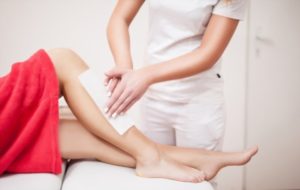 Consider the existing types of hair removal:
Consider the existing types of hair removal:
Wax – allows you to remove hair for a long time (about 3-4 weeks). As the name suggests, this type of hair removal is performed using heated wax. These can be wax strips, wax blocks, or just wax in cans. The heated wax is applied to the previously cleansed skin, and then, with a sharp movement, it is removed along with the adhered hair against hair growth. The method is quite painful, especially for those with a low pain threshold. Unfortunately, it can also lead to ingrown hairs.
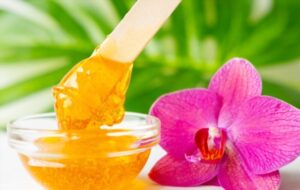 Sugaring – The method is similar to waxing, but instead of wax, a mixture of sugar or honey, water or citrus juice is used. The sugaring mixture is also heated, kneaded in the hands and applied to the unwanted hair area. The mixture envelops the hairs and must be quickly removed by pulling sharply in the direction of hair growth. Since the movement occurs in the direction of hair growth, it prevents the appearance of ingrown hairs, therefore it can be used on any part of the body.
Sugaring – The method is similar to waxing, but instead of wax, a mixture of sugar or honey, water or citrus juice is used. The sugaring mixture is also heated, kneaded in the hands and applied to the unwanted hair area. The mixture envelops the hairs and must be quickly removed by pulling sharply in the direction of hair growth. Since the movement occurs in the direction of hair growth, it prevents the appearance of ingrown hairs, therefore it can be used on any part of the body.
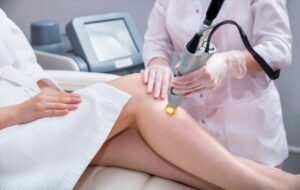 Epilator – it is an electrical appliance that mechanically removes hair by pulling it out at the base of the root. The principle of operation is similar to the process of hair removal with wax.
Epilator – it is an electrical appliance that mechanically removes hair by pulling it out at the base of the root. The principle of operation is similar to the process of hair removal with wax.
Laser hair removal – this method allows you to part with unwanted hair for a long time, almost forever. True, for this procedure you need to go to the salon, and repeatedly. This procedure is expensive and only specialists can do it correctly. But laser hair removal is not suitable for light-haired and gray-haired people, due to the selective effect on the melanin pigment, which destroys the follicle, since this pigment is absent in gray and light hair.
Why can skin be irritated as a result of hair removal?
Main reasons :
Mechanical damage to the skin. During the epilation procedure, not only the hair is removed, but also the follicle, which is much thicker than the hair. Naturally, this leads to damage to the dermis. The result is red spots and dry skin.
Oily skin type. In this case, there is an increased production of sebum. In addition to irritation, there is also the problem of ingrown hairs.
Anatomical features of the skin. Increased dryness or sensitivity of the skin contributes to the appearance of irritation, which is more common in women with fair skin.
Substandard materials. Expired sugaring wax or paste, dull epilator blades. This can cause allergic reactions, ingrown hairs, clogged pores, and ulcers and boils.
Improper care after epilation. It is necessary to use special products that will help soothe, soften and moisturize the skin. This will be discussed below.

Almost any method of removing unwanted hair, be it depilation or epilation, injures the top layer of the skin. The skin is dry and irritated. But sometimes bacteria get into microtraumas that cause inflammation. To avoid this, it is necessary to use a special oil that will help moisturize and soften the skin, relieve irritation, and prevent inflammation.
The post-depilation oil formula is based on a combination of natural and essential oils that have antiseptic, moisturizing, emollient, antibacterial and soothing properties. Oils have long been used in cosmetology and their effectiveness has been confirmed by repeated studies.
The base oil after epilation can be almond oil, jojoba oil, coconut oil, grape seed oil, or a combination of any. Vegetable oils actively soften the skin and help retain moisture. They contain fatty acids: lauric, myristic, oleic, linoleic, omega-3, omega-6, omega-9 and others, as well as phospholipids, phytosterols, waxes, vitamins and minerals. Each of these compounds has a set of valuable properties for the human body. Natural oils are unique in that they have a beneficial effect on the skin, moreover, in various ways: they moisturize and soothe dry skin, and in oily skin they normalize the production of sebum and relieve irritation.
Almond oil
It is a source of beneficial vitamins, antioxidants, fatty acids and minerals. An excellent emollient and moisturizer, it moisturizes and soothes dry, reddened skin and inflammation after epilation. Almond oil is lightweight and quickly absorbed, penetrates deeply into the skin, restoring natural defenses against free radicals and preventing premature aging. It helps to stimulate the natural production of collagen and elastin, accelerate skin cell renewal, repair skin damage and normalize the sebaceous glands to balance the sebum content of the skin. Suitable for all skin types, including the most sensitive, as well as mature and aging skin. Thanks to its antibacterial properties, it also helps with acne and prevents infection from entering the skin after epilation.
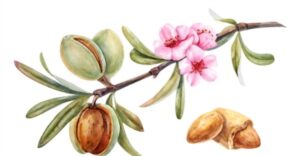 Jojoba oil
Jojoba oil
Being by its nature not oil, but liquid wax, it is similar in composition to sebum, therefore it easily penetrates into the deep layers of the epidermis. Contains a lot of vitamin E, and as a natural antioxidant, it protects the skin from oxidative stress and premature aging. It has anti-inflammatory, antimicrobial, antibacterial and antifungal properties, making it ideal for skin protection after epilation and against ingrown hairs. Jojoba oil stimulates the regeneration of skin cells and promotes rapid healing of any damage caused by epilation and depilation. Suitable for all skin types.
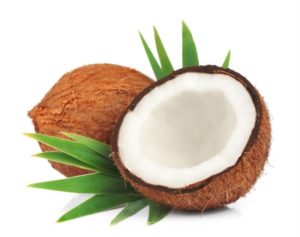 Coconut oil
Coconut oil
Coconut oil is a powerhouse of vitamins and nutrients. It has antiseptic properties. Contains a large amount of lauric acid, due to which this oil is able to heal small wounds and blemishes after the epilation procedure. The effect of applying coconut oil is noticeable immediately after application to irritated skin, as it relieves itching, irritation and pain after sugaring, and after waxing helps to remove wax residues and relieve skin irritation. Long-term use of this oil reduces the number of ingrown hairs, as it helps to soften the dermis and thin the hairs themselves. Suitable for all skin types, especially those prone to flaking.
Grape seed oil
Recommended for those with oily skin. It regulates the work of the sebaceous glands, reduces and cleanses pores, fights skin problems, regenerates the skin, heals wounds and blemishes. It is quickly absorbed into the skin without leaving any sticky residue. Great for removing wax residues after waxing.
What are the most beneficial essential oils after hair removal?
It is imperative to add essential oils to the oil used after hair removal, which have antimicrobial, anti-inflammatory and antioxidant properties. It is essential oils that help to avoid inflammation after epilation. Any essential oil contains a whole range of beneficial nutrients: terpenes (have antiseptic, analgesic, restorative and relaxing effects), alcohols (warm and resist bacteria), aldehydes (reduce inflammation), phenols (improve mood, improve immunity), ketones (relieve pain , promote rapid regeneration). Hair growth inhibitors should contain compounds such as alkaloids, glycosides, acids and flavonoids. These ingredients contain essential oils of tea tree, eucalyptus, lavender and mint.
Tea tree oil
It has a strong anti-inflammatory, antibacterial, antifungal, antipruritic effect. It is one of the best oils for treating irritation after epilation. Suitable for all skin types. It soothes the skin, relieves irritation, promotes wound healing and regulates sebum production. Reduces pain after depilation and has a bactericidal effect. Slows down the growth of unwanted hair and prevents ingrown hairs. It helps treat psoriasis and seborrheic dermatitis, and also relieves acne. Deeply cleanses pores and removes impurities. Improves blood circulation and complexion, refreshes the skin, removes flabbiness and restores elasticity.
Eucalyptus oil
Has strong antibacterial, antifungal and antioxidant properties that promote skin health. Its cooling and anti-inflammatory properties help relieve pain after epilation. It improves blood circulation, promotes wound healing, slows down unwanted hair growth and prevents ingrown hair infections. When inhaling the scent of eucalyptus, anxiety and lethargy disappear, vigor and clarity of mind appear.
 Lavender oil
Lavender oil
Due to its anti-inflammatory, analgesic, antibacterial, astringent, moisturizing, cleansing and healing properties, this oil is very suitable for treating skin after epilation, as it relieves pain and heals skin wounds. Reduces inflammation and itching, soothes and treats skin conditions such as eczema, psoriasis, acne and infected ingrown hairs. Slows down the growth of unwanted hair. Suitable for all skin types.
When inhaled, the aroma has a calming effect, relieves anxiety and depression.
Peppermint oil
It cools and tones the skin. Has anti-inflammatory, antifungal, antimicrobial and healing effects. It has an anesthetic effect and prevents ingrown hairs. To take advantage of the anesthetic effect of peppermint oil, you need to apply it before the epilation procedure to cleansed skin, rub in with light movements and wait until it is completely absorbed, then start the procedure for getting rid of hair. After epilation, soothes skin irritation and relieves itching. Slows down the growth of unwanted hair. Promotes skin rejuvenation. When inhaled, the aroma invigorates and improves mood.
Lemongrass oil
Has antibacterial, antifungal, antiseptic and antioxidant properties. Cleanses and detoxifies skin and pores, helps to shrink enlarged pores, eliminate excess oil and prevent acne and blackheads. Reduces post-epilation redness as well as inflammation and itching. Promotes blood circulation and has a wound healing effect, cleaning and disinfecting any damage to the skin, it is also useful in the treatment of ingrown hairs, stimulates cell regeneration and strengthens connective tissues. The aroma of this oil invigorates and reduces nervousness.
Note: After applying lemongrass oil, do not go out in the sun as the skin becomes more photosensitive.
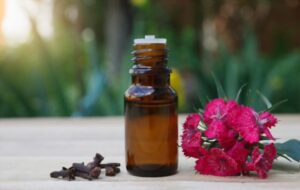 Clove oil
Clove oil
The antimicrobial properties of this oil help stop the growth of microorganisms and bacteria that cause skin conditions, particularly infected ingrown hairs. It has an analgesic effect, which makes it a good remedy after a painful epilation procedure. In addition, clove oil has an anti-allergy effect.
Lemon oil
Has a strong disinfectant effect. Problems such as acne, itchy skin, wounds after hair removal can be easily healed by cleansing the skin with lemon oil. Just mix a few drops of oil in a glass of boiled water and treat problem areas twice a day. Plus, lemon oil promotes quick healing of acne and acne scars.
Some recipes using natural and essential oils:
- Add 3-5 drops of tea tree and / or peppermint essential oils to 2 tablespoons of the base oil (jojoba oil, almond oil or other).
- Mix jojoba or grape seed oil (1 tablespoon) with tea tree essential oil (5 drops) and mint (3 drops).
- Jojoba oil (1 tablespoon), add 2-3 drops of peppermint, lavender and tea tree essential oils. This mixture reduces pain and has a bactericidal effect.
For maximum effectiveness, these oil blends should not only be applied directly after epilation, but also be used in everyday care instead of body cream. Then your skin will always look perfect, there will be no feeling of discomfort after removing unwanted hair.
Attention! Allergy to base oils is quite rare, and to essential oils more common. Therefore, an allergy test must be carried out before use. To do this, apply a drop of oil to the bend of the elbow and wait two hours. If redness or irritation does not occur, the oil can be applied.
We hope that our advice on choosing natural post-epilation care products will help you always have smooth, well-groomed skin.

